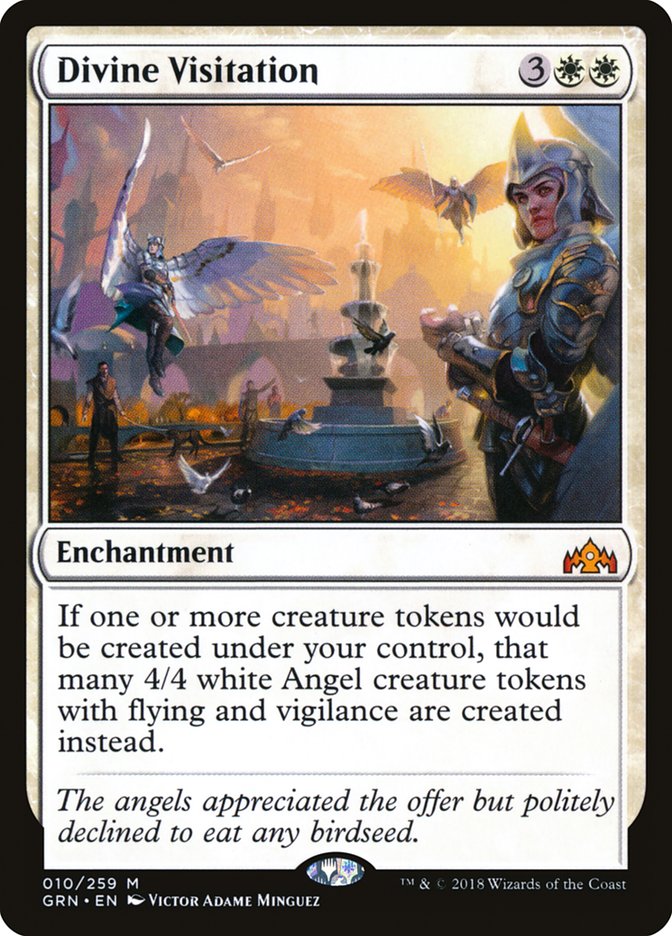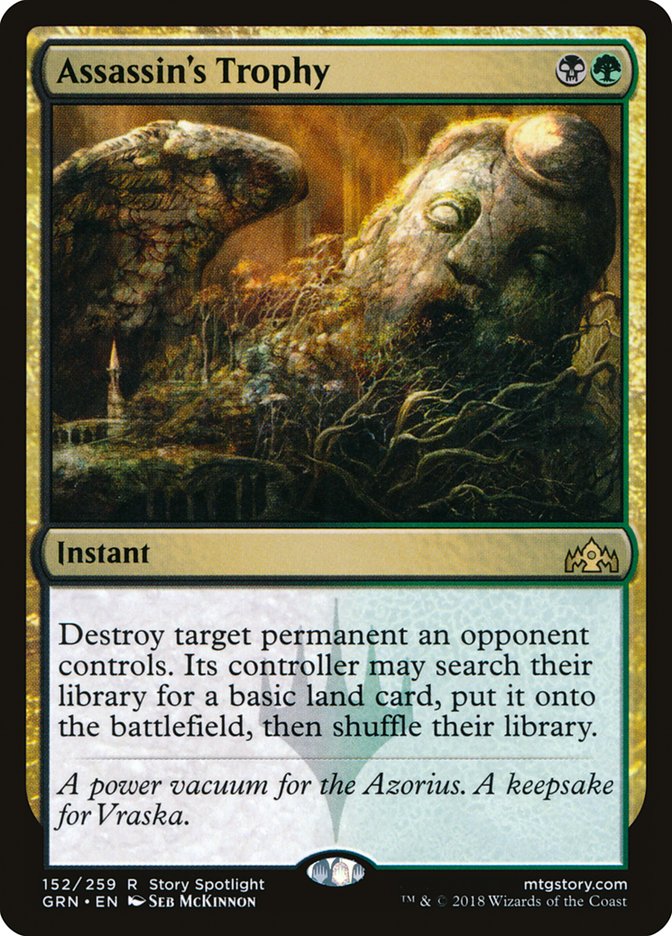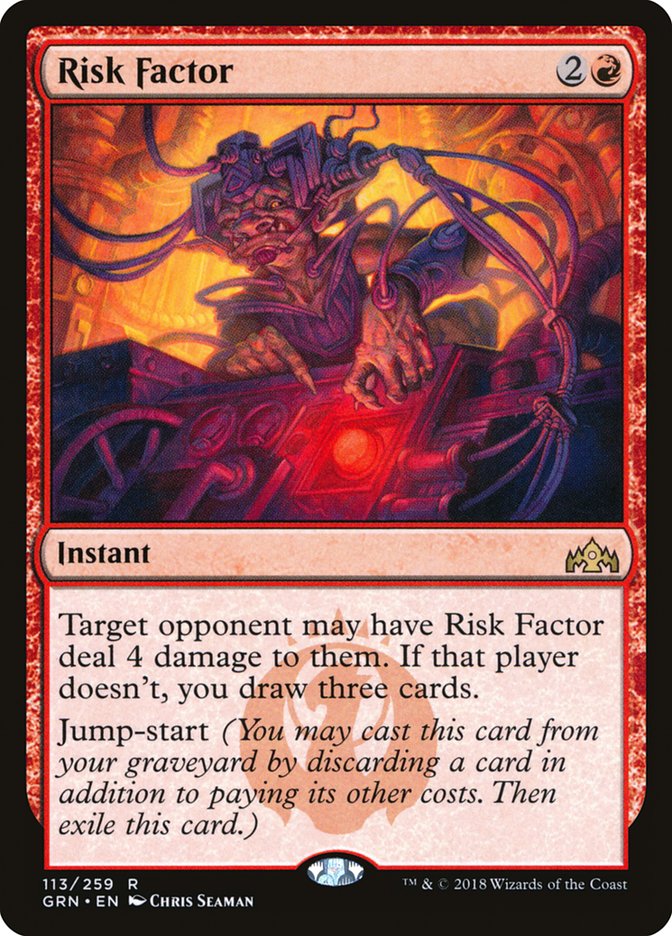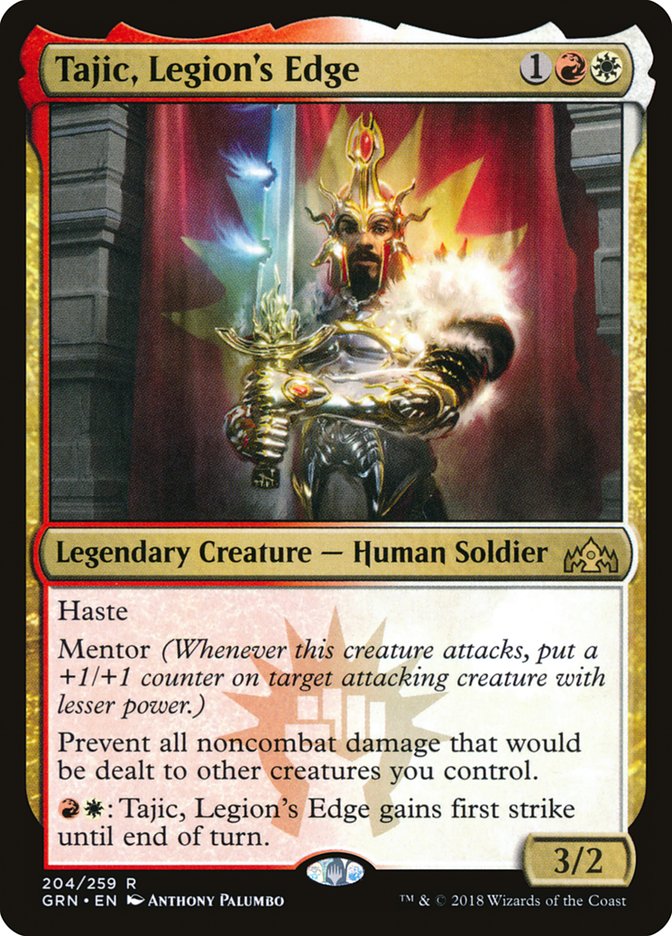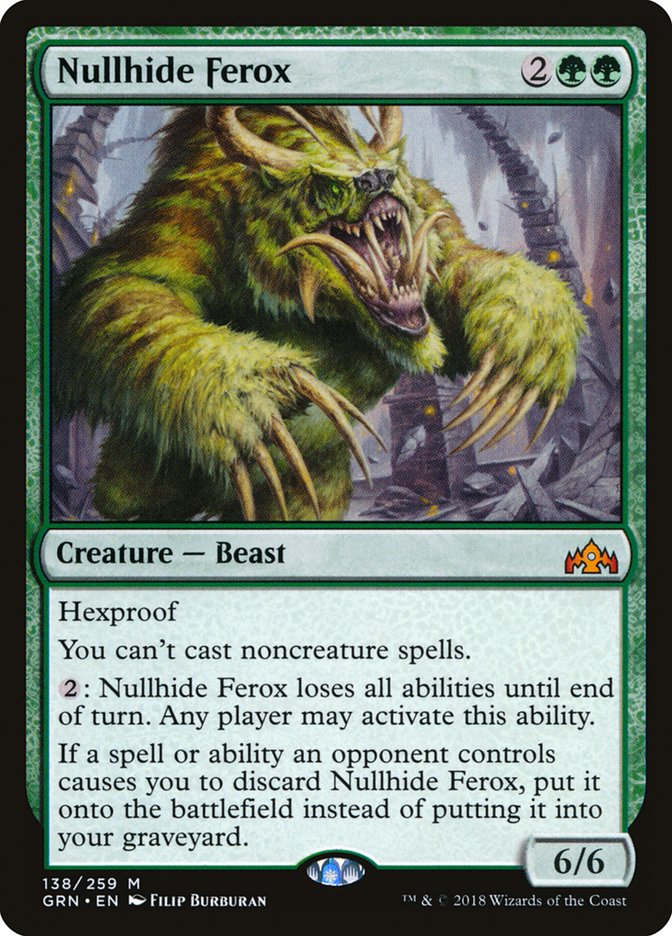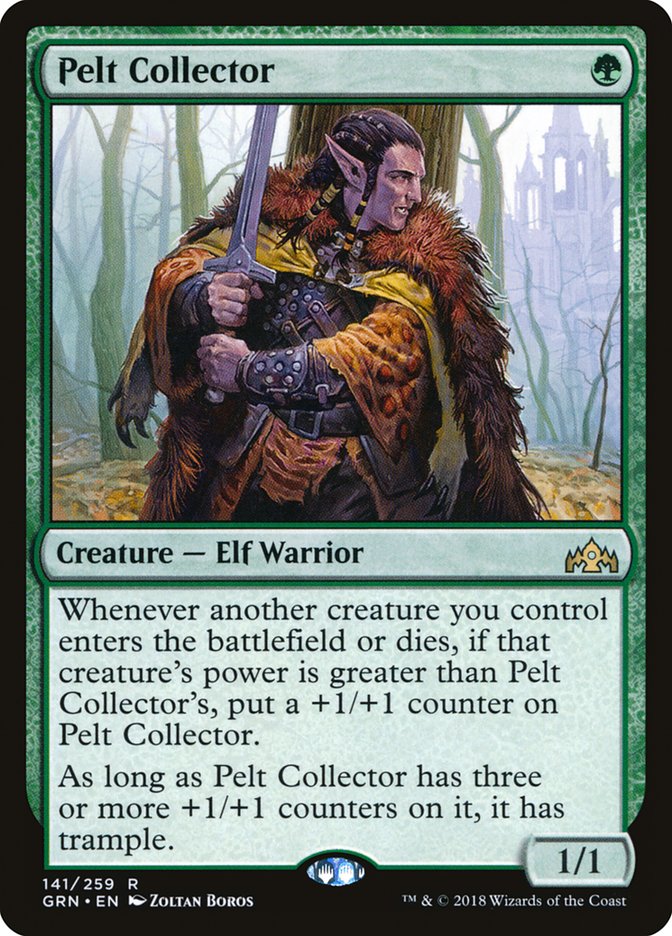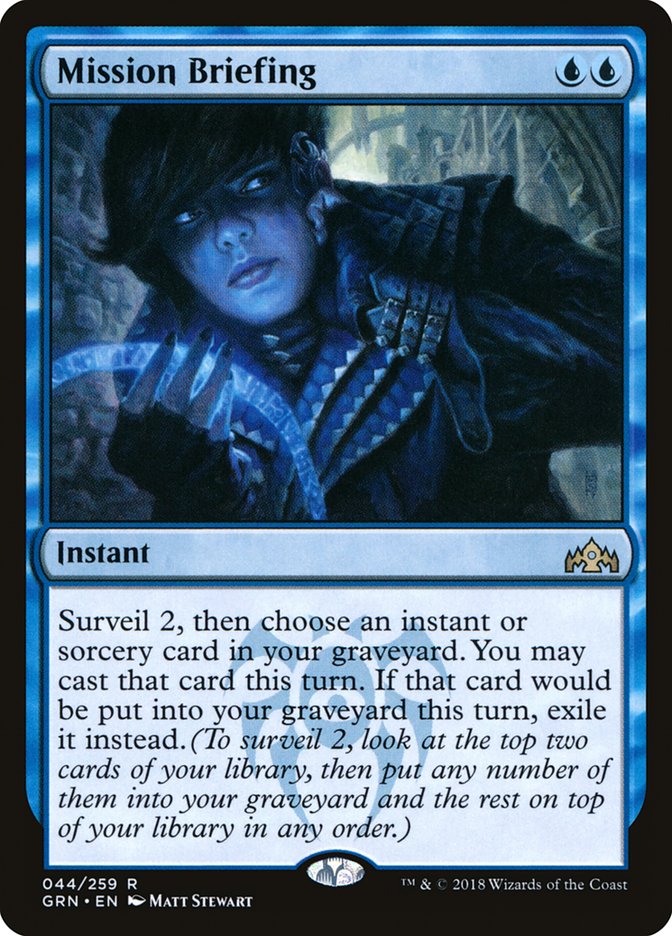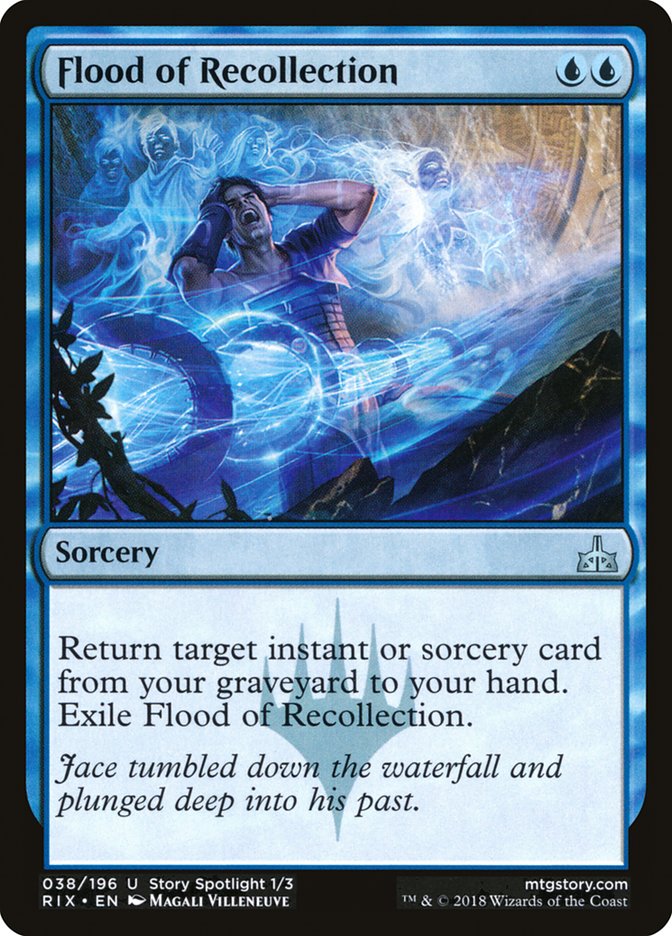Welcome to another edition of
Fact or Fiction!
Today, Sam Black, Shaheen Soorani, and Ari Lax are here to render
their verdicts on five statements about
Guilds of Ravnica preview season. Don’t forget to vote for the winner at the end!
1. Divine Visitation was the missing piece for a token strategy
and will make them a viable strategy in Guilds of Ravnica
Standard.
Sam Black:
Fact
. It’s very hard to know what will be viable in an unknown format, but
Divine Visitation does something unique and powerful for tokens that lets
them compete in a relevantly different way.
This is a good enabler because it’s persistent, works with most token
makers, and doesn’t require any set up; your opponent always must respect
the threat this represents, and it makes basically any token maker
extremely hard to deal with.
Five is an absolutely huge upfront cost for a card that doesn’t impact the
battlefield, but tokens are great at getting ahead enough that they can
take time off or play it after a control deck plays a sweeper, and then
every card they play after demands another sweeper immediately.
That said, if everyone is playing green decks with Steel Leaf Champion or
trample and maindeck enchantment removal, like Assassin’s Trophy, Vraska,
Relic Seeker, or Knight of Autumn, it won’t do well.
Shaheen Soorani: Fiction
. Five-mana enchantments have been viewed as busted in the past, whether
you’re putting Angels onto the battlefield with lifegain or putting giant
artifacts onto the battlefield with spells. The issue is the mana cost.
There have been viable token strategies in Standard in the past using an
all-star enchantment in Jeskai Ascendency, as well as the four-mana
Anointed Procession that synergized perfectly with its embalm/token
comrades. Turn five seeing some payoff may win you matches against midrange
opponents that decided not to bring Goblin Chainwhirler to the party.
Even with superior options of the past, tokens haven’t taken off without a
dominant early game, which it still doesn’t have. There have been cards
floating around (not counting our favorite Goblin) that have stifled the
ability for tokens to take off. Cards like Virulent Plague and Languish
existed in midrange/control decks to make sure that even their potential
good matchup never bore fruit. With one of the most powerful cards
remaining from old Standard being a red maindeck staple, it makes it that
much worse to craft a strategy around creatures with one toughness.
Ari Lax:
Fiction, but I owe you some optimism
.
Jeez, a hard lead off question that has me hitting Gatherer and you place
me up against Sam Black in a “Is Tokens Goods” debate? What the heck.
Divine Visitation doesn’t get the free roll welcome that Anointed
Procession and Hidden Stockpile had early last season. People can and will
kill enchantments. I want to get value out of it in the small window of the
turn I cast it. How can I make tokens for free and why would I want to make
a midrange deck with this card and add those?
Emmara, Soul of the Accord, Legion Warboss, Jace, Cunning Castaway, Mavren
Fein, Dusk Apostle, Karn, Scion of Urza, Leonin Warleader, and Tezzeret,
Artifice Master came up as quick hits. That’s a fair number of enablers
that largely point to a similar strategy of building a battlefield.
Oddly Azorius seem better suited to this or maybe Orzhov for Vampires. I
don’t think Divine Visitation is the card that turns tokens around, but
here’s where the optimism comes in because I love talking about mana. The
card might be Hallowed Fountain or Godless Shrine, and we know those are
right around the corner in Ravnica Allegiance.
2. Risk Factor is a very good punisher card and will see play
across numerous Constructed formats.
Sam Black:
Fiction
. Risk Factor looks like a very strong card in a vacuum to me, but I’m
skeptical about its success in any format at the moment.
The key issue is that I’m not sure that there’s enough support for burn in
Standard. If that’s true, it could still be successful even in something
like Izzet Wizards Aggro, or, more likely, it might be bad for a while, but
then become an important part of a great red deck in a larger format.
Standard is its best chance, as with most cards, especially cards that cost
more than two mana.
In Modern, I think it’s powerful, but I think it’s too slow. Usually if you
cast a three mana burn spell, you want it to end the game on the spot, and
here, they can just give you cards and kill you before you untap again. It
might be good against control decks, but sideboard slots are precious, and
I don’t know that it’s good enough to earn a spot. Bomat Courier might be
better at what it’s doing.
Shaheen Soorani: Fact
. Risk Factor is the best punisher card I’ve ever seen printed. I think it
may have a role in Modern burn decks, but not immediately in Standard. Burn
in Standard lost a few of its explosive early drops that dropped opponents
low enough to torch them. Punisher cards in Standard is somewhat uncharted
waters. Browbeat was the previous king of punisher hill, but that Standard
format hasn’t been around for quite some time.
Competitors back then tried their best to slay their opponents with a heavy
hit to the life total or drawing three cards that should result in a quick,
fiery death. The issue then may be the same as now: three cards doesn’t
guarantee anything like a good old-fashioned burn spell in its place would.
Risk Factor has a few benefits that separate it from its distant cousin
Browbeat. Instant speed and recastable make it truly a contender in older
formats, and I hope it doesn’t impact Standard in a significant
way. I’m always very suspicious of punisher cards with their embarrassing
competitive history, but this may be the card that puts that card style on
the map.
Ari Lax:
Fiction on Good, Fact on seeing play
. Risk Factor is going to see play across numerous Constructed formats
because people are bad at understanding Magic. Just like Surgical
Extraction is the card that gets sideboarded in the most in Modern because
people are bad at understanding Magic. […I’m listening. – DWest]
Every time Browbeat has been close to playable, one of the biggest issues
with it is the mana investment. You’re trying to be proactive, so you play
a conditional three-mana card that often has a mode where it does nothing
to immediately progress your plan.
Imagine one card letting you pay twice for the privilege of being even
worse at Browbeating. Oh boy is Risk Factor terrible, but I gladly accept
its caster’s willingness to donate match points.
3. Tajic, Legion’s Edge will see play in Modern
Humans.
Sam Black:
Fact
. There are a couple slots in Humans that people aren’t sure about; we’ll
call them the “Militia Bugler spot.” Tajic is good enough to try there. I
don’t know that it’s good enough to become industry standard, but it’s good
enough to try.
Mentor is impressive, haste is impressive. If you’re just trying to clock
someone who isn’t blocking, this is probably doing one more damage than
Mantis Rider would have, because you get a counter right away. The
following turn its impact is like it’s attacking for five and the counters
stick around even if they kill it.
On top of just being the most aggressive three-drop where you don’t need
evasion, the protection ability’s great. It means an Anger of the Gods
can’t kill your team and you can vial Tajic in to counter a burn spell.
That said, Modern is a hard format for a card to break into and it might
not pan out to be the best option, but I like its chances.
Shaheen Soorani: Fiction
. Tajic, Legion’s Edge feels like a pushed Boros card and will see
immediate Standard play. The best aggro deck with Guilds of Ravnica appears to fit that color combination and all
the text on the legend has an impact on most Standard matchups. This card
seems atrocious in Modern, let alone in Modern Humans, where all the
creatures are lean and efficient.
Standard has room for creatures with a few clunky abilities attached. The
creatures that shine in Modern and see a tremendous amount of play all
follow a similar mold. In Modern Humans, each creature that enters the
battlefield has a giant impact on the battlefield or prevents combo/control
decks from interacting. Tajic, Legion’s Edge may attack for three with an
extra counter on an earlier threat, which is so much worse than Thalia’s
Lieutenant (or any other creature in the deck that costs more than one).
Ari Lax:
Fiction
. My first instinct was that this would happen, but after looking a bit
closer I’m unconvinced.
Tajic, Legion’s Edge is just a fine attacker. It adds three power and a
mentor trigger for three mana, but my Humans three-drops need to do more.
Mantis Rider flies. Reflector Mage is removal. Thalia, Heretic Cathar just
cripples people. This feels more like a Kessig Malcontents just jamming
some damage in there.
The ability that must do work is the prevent damage ability, but as a
three-mana 3/2 Tajic will just die to removal then. He doesn’t save himself
from Lightning Bolt or the card would be extra dumb. He even dies to
Searing Blood and Grim Lavamancer, jeez. This isn’t stopping Jeskai or
Burn.
Your opponent must have almost no spot removal, but also Anger of the Gods
you want to stop. The only deck that falls into this category I can think
of is TitanShift. Maybe you could argue Tajic is good enough there, but is
he even better than Thalia cutting a land drop? I’ll pass.
4. Nullhide Ferox and Pelt Collector make Mono-Green Aggro the
deck to beat in the early stages of Guilds of Ravnica
Standard.
Sam Black:
Fiction
. Partially, saying this won’t be the best deck when I don’t know what the
best deck will be just feels like a safe bet numbers game. More
importantly, I just think the mana’s too good.
This is a small format with a gold set, and the mana allows you to play
Steel Leaf Champion and another color. Mono-color decks typically do better
in larger Standard formats where they have enough good options throughout
the curve. Right now, it seems extremely unlikely that the best deck will
be one color rather than two or three.
That said, Pelt Collector and Llanowar Elves are both fantastic one drops,
so I like Green in the format, and I think Nullhide Ferox plays very well
with Pelt Collector, I just think the best version will splash another
color.
Shaheen Soorani: Fact…sort of
. I think Mono-Green Aggro is the best creature deck alongside Boros Aggro,
but there will be a great deal of decks to beat in the early stages of Guilds of Ravnica Standard. Pelt Collector is such a powerful card
and allows for other vicious starts outside of a turn 2 5/4. Nullhide Ferox
is going to be a nightmare for other creature decks to interact with but
may not be the best against decks that pack a bunch of Cast Downs.
Ari Lax:
Fact.
I get to use my one “technically” answer here! Technically, it’s going to
be Golgari.
I spent all of yesterday going over this. Mono-Green is very vulnerable
to known angles of attack
. There’s no reason to not splash in these decks. The mana can support
Llanowar Elves, Steel Leaf Champion, and stuff that fights back against the
ways people are trying to fight you.
Right now, I think that people are going to try to beat green aggro with
sweepers and big engine permanents like Teferi, Hero of Dominaria. Black
gives you Duress and Assassin’s Trophy, which are clean answers to all that
nonsense. You can get back to thwacking people over the head with green
idiots and worry less about those jerks with Bant Nexus.
5. While Mission Briefing isn’t Snapcaster Mage, it’s still good
enough to be a Constructed staple.
Sam Black: Fiction
. “Staple” is tricky. I think it’s a good card. I think Snapcaster Mage is
usually better, though I could imagine a combo deck wanting Mission
Briefing instead.
The biggest problems with Mission Briefing are the UU casting cost and a
shortage of one-mana instants in Standard. Even something like Disfigure
(or Fatal Push) over Dead Weight would go a long way, but when you need
four mana for the effect, there’s probably just too much competition at
four mana.
I think the card is good, but I don’t think it has the right supporting
cast in Standard, and I think it’s generally weaker than Snapcaster Mage in
Modern. I think it may occasionally show up in small numbers, especially in
Standard, but it won’t be what I’d consider a staple.
Shaheen Soorani:
Fiction
. I don’t like to use the term “unplayable” liberally, but Mission Briefing
produces a high level of temptation to do so. To cast a blue card, you need
triple blue. Those are the spells that you will likely recast from the
graveyard in the early game, recountering creatures or drawing a few extra
cards. The fact that it is so much worse than Snapcaster Mage
isn’t what bothers me the most, but the double blue mana cost does too.
Mana is going to get slightly worse with rotation before it becomes
absurdly perfect with the rest of the dual lands joining the fray. In the
meantime, asking a mage to produce quadruple blue to cast a Sinister
Sabotage is just silly.
There are nonblue cards that are worth a recast, but the format calls for a
blocker to come with it. A six-mana Vraska’s Contempt was busted with
Torrential Gearhulk, or in a fantasy land with Snapcaster Mage. It isn’t
even close with Mission Briefing, and it upsets me on a personal level.
Constructed staple is beyond a stretch and I’d be surprised it if sees the
competitive light of day.
Ari Lax: Fiction
Flood of Recollection is not a Constructed staple. In fact, no Flood of
Recollection effect has ever been one unless it comes as a clean
two-for-one. They have only seen marginal play in combo decks and we have
no broken effects like Early Harvest or Time Warp to recur. Mission
Briefing doesn’t even let you full on copy loop the way Call to Mind used
to.
This is a bit uncharitable to Mission Briefing as surveil two is very real
game text, but it still has issues.
In anything older than Standard you must ask yourself why you aren’t
playing Snapcaster Mage, and then why you need a much worse fifth one.
Snapcaster Mage provides the incremental value of attacking and creates
cool loops with Kolaghan’s Command and similar spells. Mission Briefing is
going to be at most an occasional singleton, not a staple.
Standard is still dicey. You need to get a card out of the “Flashback” part
of it, and that’s a pretty constrained effect. The spells in Standard
aren’t efficient and powerful the way they are in older formats, they’re
expensive and hard to pay two extra for. You might have one deck with the
right density of Lightning Strike, Opt, and Lava Coil to want Mission
Briefing, and even then, it’s a clunky effect competing with planeswalkers
and Chemister’s Insight. Definitely not a staple.


